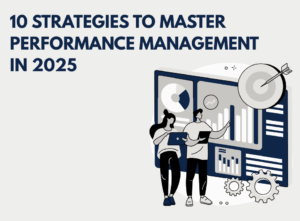
Employee Performance and Expectation Management in SMEs and startups
As the cliche goes, employees are the best asset of any company – be it a multinational corporation or an SME or startup doing the rounds. But as it is, this is a most precocious cliche. And a company that manages and nurtures this asset over time better than others, wins as a rule of thumb. Among other departments like technology, business, and management, another stakeholder which needs to be on top of their game regarding this one is the human resources department. Their job is to manage the business and the human aspects of such an important matter as employee satisfaction. If they lax too much on one side of the equation without taking care of the other, there is every chance of long term failure as a multi-part machine. The large corporations have evolved over the years to understand these aspects and the Human Resource departments there are well equipped to understand, assess and manage employee performance related issues. This results in stellar performance over decades for huge employee-base corporations like a multinational Consulting company employing lacs of people.
But this is always not true for a smaller setup like an SME or a startup. They are pretty young as an entity in comparison. They have not witnessed many of those situations before and even if they are cognizant of these, the human resource department may not have the accurate representation or tools to mitigate such a scenario. The startups evolve so fast in the initial years on the business and technology side, that the core team members are not always aware of these aspects on a day to day basis. This may result in employee terminations/firing or resignations which could be mitigated given sufficient grasp and attention to the situation. Similarly, in an SME, the goals of the company are going to be very financially dependent as its not a huge entity or force. But, if the management or HR department pays better attention to these issues in a structured manner, they can reap rewards in the longer term. Hence, we shall focus on the aspects lacking in SMEs regarding employee performance management and handling terminations if they are inevitable.
Importance of an Employee Performance Management System in an SME
As a company grows, the number of staff increases over time. Generally, some companies manage them better than others as far as performance management goes. It is a process that requires understanding not just the business side of things, but also the so-called personal or humane aspects which govern a person and professional. Then, of course, it needs to be executed. And it is a challenge at all levels – intellectual, logistical, analytical, etc. Thus, in the fast-paced world of business delivery and clients expectation management, these aspects get sidelined in an organization. Specially if it is not yet a mature organization but is still growing fast. But in the longer run, if not managed properly, employee performance management can be an area that hampers the growth of a company. You may remain an SME all your company-life if you do not respect the aspect. Business leaders are always cognizant of the financial reward profiles and may neglect the employee motivation aspects. Some of the employee expectations may be unrealistic. But others may be legitimate and could hurt you if you do not pay attention to those details. And hence, you need to have a thorough communication on an ongoing basis with your employees. On performance aspects like any others.
The first aspect to manage an employee’s performance is to register or record it. This is a human resources department logistics and business-line issue which is managed very beautifully in large corporations managing hundreds of thousands of employees. This is the reason they thrive so well. Their game may not be the deepest on technology or IP, but it is pretty solid on the behavioral side of human capital. They have generally robust systems in place that accumulate all the data over time. They get these HR systems built tailor-made and customized for them. An SME needs to do the same for employee assessment. If it is present in your appraisal cycles, it is great. Else, you can start by thinking ahead of time and invest before the next cycle. You can use any of the many free systems available if you can not afford a dedicated paid system for your needs. But you need to train your Human Resources personnel on any one of these. You can get the HR and managers trained for this yearly exercise beforehand. Even if you have a yearly exercise in place for the appraisal for performance, you can have a performance recording and communications cycle on a half-yearly or even quarterly basis if the need be. Of course, it should not make the whole floor dull and dim in anticipation every quarter. Hence, it can be a lighter toned exercise that way. But you need to note and understand where your employees stand in terms of their performance as often as possible. This is good for them in the long run. If an employee is distracted, they can over the course of time self-correct if it is communicated to them. But at the same time, we should not look to micromanage. Employees are humans who shall have humane problems from time to time and cannot be on top of their game every month of every year. Cut them some slack that way. That is what a smart and mature manager would do anyway.
Hence, you need to come up with metrics that are nicely quantifiable. As an SME, your goals and measurement metric may differ from one employee set to another as they may be doing very specialized jobs. The more time the core-team and management spend on defining the KPIs and recording systems, the better it is going to show results in the longer term.
You should communicate more to the employees who perform worse and give them sufficient time to improve. It may not always result in performance enhancements, but a quantified set of data means you have a better grasp on the issues as a management and company. Maybe you shall not make a similar hiring mistake in future as there is a reference for even a new hiring manager. This is a sign of a mature company if the new managers understand the history of the issues associated with business and employees in a structured and professional manner. Also, you should document every part of the discussion for future reference as it shall help you start the next discussion from where you left it. It can be a note on a piece of paper if you will, but please document it. If the employees communicate their concerns for their poor performance, give them more rope. Be unbiased in your assessment and recording of data. You can tell the poorly performing employee that It was OK to not perform at their best all the time actually as they were bound to lose steam some months in life. But they need to work on that and get back to the game in best spirits. Poor performance cannot continue on an ongoing basis. The good ones would get the hint and improve. A little encouragement may sometimes work wonders with more sensitive employees. Good record-keeping may also help you in taking quantifiable numbers-based decisions. Use of a good Attendance Management System shall go a long way to do great recordkeeping of various aspects in Attendance and Leave.
If it comes to it, however, your company may need to fire a non-performing employee or team. The termination could also result from reasons other than performance. It could just be a business misalignment. Your SME or startup may change or pivot the business. But you need to understand that the termination process is very stressful for the employee. It is also stressful for the managers and everyone on the floor actually. Hence, it would be prudent to prepare for that situation.
Termination related issues and solutions in an SME
If you have decided to let a team go for reasons related to company finances, it can be a tricky decision and the whole time around this process could be tricky as well. You first need to decide how many employees to fire and which ones need to go. This can be a soul-churner for a founder or business owner. Hence, these decisions should be given enough time and thought. Once you have however made your strategy, you need to effect the change very calmly and efficiently. there are logistical challenges involved as it is a very delicate matter for so many people. You should have all kinds of material in your possession as you hold that meeting on a one-on-one basis with the person. they are going to have questions apart from performance related matters. Questions like severance numbers, relieving letter, F&F. You need to give precise answers on those counts. That is the least you could do to help them. If possible, you can assure them that you shall help them in getting a job outside especially if the firing is not for performance reasons. In any case, don’t surprise them on a day all of a sudden. Make the process gradual.
The event is definitely not welcome. But if all participants have empathy and with proper preparation, it can be less ugly and be made to pass smoothly. You can refer to some HR text written on the subject as well. Also, as management of the company you need to come up with a plan after the termination. You need to hire again. You need to work with the human resources and business managers to understand the source of problems that led to the situation. You may even need to go back to the strategy drawing-board and pivot some business areas if they do not fit into the model financially.
Finally, you need to communicate to and let the employees who stated that they were safe. Reassuring them sooner shall go a long way in getting the things to normal on the floor.
Legal aspects to employee termination in India
There are some legal issues also that should be considered while dealing with employee terminations. The government of India does not allow “at-will” termination of employees. What it means is that there needs to be a reasonable cause for the termination. Companies cannot hire and fire “at-will”. It can either be a performance related issue or misconduct on part of the employee that could warrant a termination. And the company may need to prove that if the need be. Termination could be challenged to be an illegal termination in a court of law and the trial can proceed. You may have to reinstate the employee and even offer back-pay. Please understand that these situations are not a norm and nothing to be overly concerned about if you have been fair as an employer.
There are separate federal level and state level laws governing employee terminations in India. Industrial Employment Act of 1947 is one such law that governs employee termination in India among many others. Companies need to comply with all of those. Also, you need to document your own criterion for performance and probable cause or termination internally. An HR manual or HR handbook is the best place to document these. This way you have a compelling case in any judicial trial to prove that the communication was up-to-the-scratch from your side. This builds confidence that the company follows the due process as far as employee termination is concerned.
An aspect of due process, in this case, is to hold an internal inquiry for matters related to misconduct. The employer may issue a charge sheet and appoint an inquiry officer to conduct the internal investigation. An employee may be suspended for the ensuing period to ensure a fair investigation if that be needed. Some cases of misconduct could be damage to property, theft, sexual harassment or violent behavior, insubordination for unreasonable reasons.
If an employee has initiated a resignation, it is best to accept the letter of resignation at the earliest if you intend to. If the employee takes back the resignation before it has been accepted, they can appeal against any termination from your side thereafter. You may not want such an employee around whose heart is no more in your business and company.
Conclusion
In conclusion, employers need to run a tight ship as far as performance measurement and management are concerned, especially as an SME. It is very important to assess where your company’s pulse is in a quantified manner. It is not sufficient to just have a rapport between managers and employees who understand their strengths and weaknesses. Companies need to build more efficient systems with a tinge of professionalism shining through in all aspects. Also, bad performance over an extended period of time needs to be reprimanded. There should be checks and balances that can be documented and measured in a quantifiable manner within an SME. Such efficient systems and professionalism within a small setup like a startup or SME go a long way in fostering a culture that eventually helps it grow into a bigger organization.


